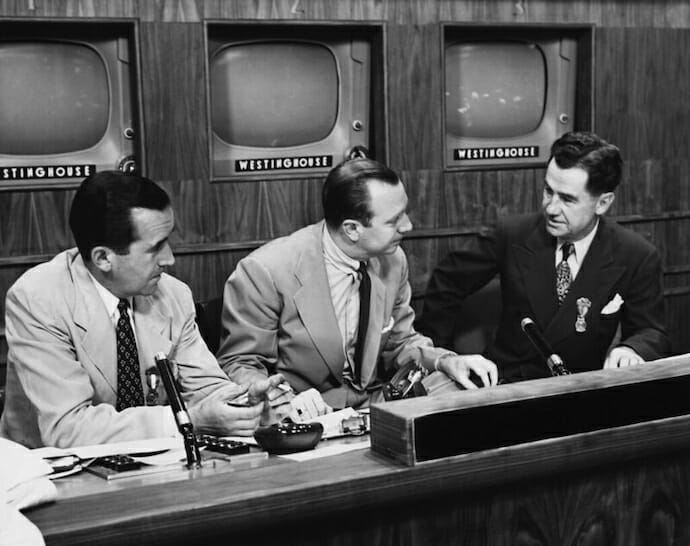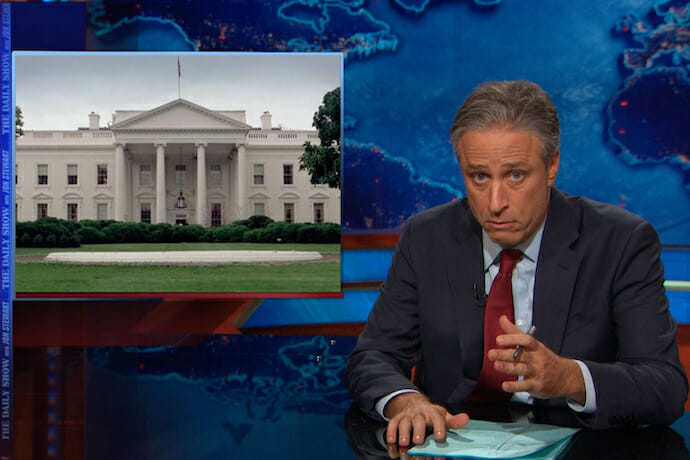
Media
The Network News Blues
Much has been made of the ongoing post-Trump and post-COVID-lockdown slump in network news viewership. Far less has been said about the possible future of Fox News, CNN, MSNBC, and smaller TV news players. In a new essay by Tom Rogers, the former president of NBC Cable, he talks about how their coffers may be on irreparable decline.
Rogers points out how cord-cutting has been trimming the number of cable subscribers for years. People, particularly tech-savvy young consumers, have been ending cable subscriptions or have been avoiding ever subscribing to cable packages in the first place throughout the social media era, instead, flocking to streaming platforms. Disney+ alone has amassed over 100 million subscribers, less than two years after its launch. Online piracy and VPN-viewing-loopholes have also played a role. Entertainment networks have been quickly migrating to the streaming game. Most scripted shows can now be streamed on one platform or another. American sports leagues and networks are increasingly coming to streaming agreements; the NFL just signed a $133 billion distribution deal that will give cable sports channels the rights to broadcast select games on their streaming platforms.
Being left behind in the scramble, Rogers notes, is network news. Cord-cutting means lower revenues for cable providers, which means lower commissions for the networks. Each TV channel gets paid per cable subscriber, regardless of whether or not the subscriber actually tunes into their shows. This gives medium-large channels the financial stability to weather short-term fluctuations in viewership-based ad revenue. With the most likely permanent decline in cable subscriptions, networks will become financially devastated.
The cord-cutting revolution will obviously also crater ad revenues, the other main source of funding for TV channels. Fewer viewers mean that sponsors will be willing to spend less on commercials. This is devastating TV channels across the board, but the news networks are being disproportionately impacted. According to a 2018 survey from Nielsen Live, the average CNN viewer is 60-years old, while at Fox and MSNBC, that figure is 65. This matters a lot, since advertisers prioritize the 18–49-year-old demographic (what they call the key demographic), since they tend to earn and thus spend the most money on the products and services that the advertisers are pitching. The key demographic is also currently the largest by population. Add in the fact that cord-cutting is disproportionately being enacted by young people and you have a ticking time bomb.
More recent figures have corroborated the TV news’ geriatric trend. April-2021 figures show that the viewership of Fox News’ most popular show, “Tucker Carlson Tonight,” was comprised of only 17% of people between the ages of 25-54. MSNBC’s flagship program, “The Rachel Maddow Show,” reached only 15% of the same demographic. CNN somewhat overperformed the latter two with “CNN Tonight with Don Lemon,” at 28%, but the show had an overall viewership a quarter the size of Carlson and Maddow’s shows. The daytime-hours ratings paint an even bleaker picture of the Big Three news channels: CNN only averaged 270,000 viewers aged 25-54, while Fox and MSNBC drew 221,000 and 147,000, respectively.
Young people are, by definition, the future. So why are the established news channels going the way of the dinosaurs? First and foremost, would have to be the matter of credibility. Americans’ trust in the news media has been tanking for years. Last year, for the first time ever, more than half of polled Americans agreed with the statements that, “Journalists and reporters are purposely trying to mislead people by saying things they know are false or gross exaggerations,” that “Most news organizations are more concerned with supporting an ideology or political position than with informing the public,” and that “The media is not doing well at being objective and non-partisan.” Young people profess to be particularly affected by network news partisanship. The Knight Foundation found that “Young adults (aged 18 to 34) are twice as likely as older adults (aged 55 and up) to say politically focused or partisan bias is a factor in their lack of trust in news media organizations, 18% to 9%, respectively. Young adults (47%) and middle-aged adults (47% of those aged 35 to 54) are also more likely than older adults (34%) to mention biased, slanted or unfair reporting more generally.”
The TV networks have been among the worst perpetrators of this offense. It’s an open secret that CNN and MSNBC have a left-wing bias and that Fox News has a right-wing bias. During the Barack Obama years, CNN/MSNBC were largely uncritical of the administration, and were oftentimes downright fawning, while Fox News denigrated the president for any and every reason, literally right down to the color of his suit. Conversely, during the Trump administration, CNN/MSNBC condemned Donald Trump nonstop as a threat to democracy and obsessed over his every tweet, while Fox News went out of their way to cheer on Trump’s every decision, give him softball interviews, and downplay his most egregious gaffes. The Big Three have truly been turning George Orwell’s idea of the “Two Minutes Hate” into the “24-Hours Hate” throughout the lifetime of most zoomers.
Not helping the case for the credibility of the news networks in the eyes of zoomers is the fact that the two most traumatizing events in their living memories, the Iraq War debacle and the Great Recession, were in part enabled by the network’s failure to do their job in the lead-up to these disasters. The media almost unanimously reported uncritically the Bush administration’s lies about Saddam Hussein having WMDs and how the militantly secular strongman was somehow in cahoots with the theocratic al-Qaeda. One of the only anchors who voiced opposition to the Iraq War buildup, Phil Donahue, was fired by MSNBC for being a “difficult public face for NBC in a time of war.”

The price for this monumental gaffe was paid for not by the media, but by the U.S., to the tune of trillions of dollars in debt, tens of thousands of U.S. soldier and contractor casualties, the emergence of ISIS, and a tattered global reputation (to say nothing of the hundreds of thousands of Iraqi civilians who died). Likewise, the news media completely ignored the many signs of the 2008 financial crash: subprime mortgages, overleveraged banks, and consumers, junk bonds being touted as AAA, NAFTA-fueled deindustrialization, rising interest rates from 2004-2006, skyrocketing U.S.-government debt (in large part from Iraq War spending) and a soaring U.S. current account deficit. If they had properly investigated and reported on these ticking time bombs, the world could have reacted sooner and potentially mitigated the worst of the economic fallout. As a result of the recession, young people have inherited an economically dim future.
In part due to these massive failures in reporting, young news consumers want to see the receipts when it comes to what they’re told. The aforementioned Knight Foundation study found that 18- to 34-year-olds are nearly thrice as likely as those 55+ to say “completeness, details and citing sources make them trust news organizations.” Small surprise that people old enough to have grown up with the original Big Three (ABC, CBS, and NBC), which had a monopoly on broadcast news at the time, have been conditioned to uncritically believe what deified anchors like Walter Cronkite and Edward R. Murrow told them.
Along the same lines, the Knight Foundation results found that “Young adults (83%) see links to research and facts to back up reporting as more important to earning their trust than adults 35 and older (65%) do.” Such a preference for citing your sources makes sense in the Internet era. Young people have been using Google, Wikipedia, YouTube, and other data aggregation sites their whole lives to research anything and everything. It’s now possible to fact-check in real time a particular statement. If a politician lies about never being in favor of a now-unpopular position that they used to espouse, best believe that someone on Twitter will find and post a video clip of the flip-flopping within minutes. Having all of humanity’s knowledge available instantly through a quick web search means that it’s hard to hoodwink people who want to find out the truth about something. Small wonder that dictatorships now routinely shut down Internet access to minimize political fallout during a scandal or disaster.
New media is increasingly replacing the old news networks when it comes to informing young consumers. YouTube channel hosts, podcasters, and writers on platforms like Substack are becoming the go-to sources for disseminating news, while Twitter serves as a source for quick takes on events and as an aggregator of links to breaking-news articles. By their holistic nature, these vectors tend to be highly based on the perspectives of individuals, as a YouTube page, podcast or newsletter will be helmed by either an individual or a handful of people. Contrast this with a news network, which has thousands of employees, most particularly teams of dozens of editors and producers, molding the narratives for stories. This has inevitably led to an increase in the partisanship of news presentation. As mentioned previously, this would seem to contradict young news consumers’ professed desire for impartial news. However, a specific finding from the Knight Foundation can square this circle: “64% rate a news organization clearly distinguishing news stories from commentary, analysis or advertiser-paid content as being very important to their trust in it.”

New media channels like TYT and The Daily Wire are open about their respectively left and right-wing perspectives, but also pledge to separate their objective reporting of issues from their subjective commentary about them. By contrast, the network news channels are guilty of doing the opposite: feigning objectivity while covertly distorting the facts to fit their desired narrative. So, this new paradigm in news presentation has the potential to either increase the isolation of political echo chambers or serve as a healthy way of dealing with the reality that there’s no such thing as completely objective news. Most likely, it will be a combination of both.
Tom Rogers tentatively proposes as a solution for the news-network revenue Ragnarök that the channels team up to offer a streaming bundle. You’d be able to watch Fox News, CNN, MSNBC and others all on the same service. Rogers admits that the bundle would fail to recuperate most of the lost revenue from formerly massive cable-subscription commissions. It’s more lucrative to rely on 100 million tiny commissions from the cable providers than hundreds of thousands or millions, if we want to be generous with the projections, of larger commissions from streaming subscriptions. The bloated staffs, production costs, and studio space rentals of channels like CNN, MSNBC and Fox News also mean that they also have infinitely higher upfront costs to recoup than a podcast or YouTube show.
This segues into my larger criticism of the proposal: young people won’t pay for a service that they don’t trust or want in the first place. The media has evolved holistically from below the networks’ feet. Now, a majority of young people get some or all of their news/news analysis from social media, most particularly audio and video content from YouTube, as well as podcasts. There are much more substantial differences than just the platform: the content itself is vastly different. News hosts/analysts on YouTube and on podcasts oftentimes go longform on stories, whereas network news shows must break up all of their content into about 8-minute blocs, in order to allow for ad breaks. This in turn compels the news channels to over-simplify and to create soundbites.
An important story may only get a few seconds of coverage before the anchor has to go onto the next story. This also affects the quality of interviews with powerful figures, such as politicians. An elected official can give a non-answer to a tough question, knowing that the journalist probably won’t have time to pursue a follow-up, and employ other rhetorical tactics to stall for time until the commercial break ends the segment. When it comes to news analysis, the time constraint means that debates oftentimes get reduced to shouting matches and sophistry. The black-or-white nature of these debate segments can also lend credibility to fringe issues, such as climate change denialism, when they’re both presented with equal credibility by the news-show platform itself and the bad-faith actor can simply use sophistry for a few minutes in order to make their thesis sound at least plausible to an uninformed viewer. Jon Stewart famously called out the vacuous nature of network news shows in 2004, during an episode of “Crossfire”. A less substantive example of the difference between TV and social media news shows is also the physical format. Many young people may feel unable to relate to a bunch of silver-haired people in designer suits and dresses talking at them through a teleprompter. The informal, oftentimes unscripted nature of shows on YouTube and on podcasts can feel more natural to people who grew up in a different media environment than boomers.
The generational dichotomy between old media and new media can be demonstrated in the recent drama between millennial news stars Krystal Ball and Saagar Enjeti, and their former employer, The Hill (which isn’t technically a TV channel but has the same show format, corporate hierarchy, and funding structure as the old news channels). Ball and Enjeti, as they have subsequently explained during multiple interviews on new-media shows, left due to the oppressive environment that they felt was being fostered by the network. They cited the problems of access journalism, possible conflicts of interest with some of their network’s advertisers, the awkwardness of having to chop up their segments to fit around ad breaks, and a general hostility that The Hill had towards new media platforms, such as YouTube. Krystal Ball had to fight with executives to even get her show broadcast on YouTube. Incidentally, Ball and Enjeti’s new YouTube channel has gained over 300,000 subscribers, while The Hill’s channel has lost over 100,000 subscribers and a gigantic ratio of average video views since they left two weeks ago. Many other journalists who jumped from old media to new-media platforms, such as Cenk Uygur and Chris Hedges, have voiced similar complaints about the stifling nature of corporate-news behemoths.
When it comes to CNN, Fox News, MSNBC, and their smaller compatriots on TV, the future looks bleak, both in terms of viewership and revenue. The corporate culture at these channels means that they have been way too slow to adapt to changing trends in consumer preferences and the need to not offend advertisers and powerful people whom they want to interview means that they will continue to stick to their failing model. Meanwhile, young journalists and policy wonks are filling the vacuum with very diverse styles of content on every platform from TikTok to Substack. The cultural ramifications of this largely generational divide in media production and consumption will have profound effects at the ballot box, academic institutions, and beyond.

